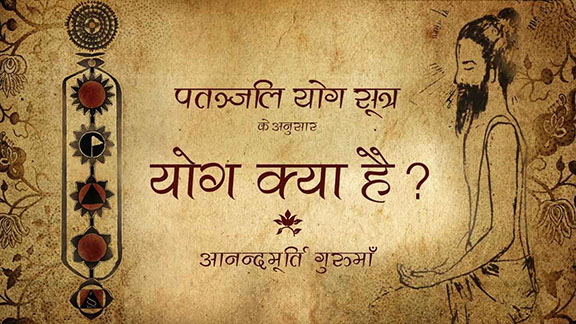 As a practitioner and as a teacher of Yoga, (the late) Mukunda Stiles pondered the Yoga Sutras for over three decades. He brings not just a philosophical understanding to the Sutras, but a deep personal experience that helps illuminate the text. In this interview from 2010, he shared his insights from his study of the traditions of classical Yoga and Ayurveda.
As a practitioner and as a teacher of Yoga, (the late) Mukunda Stiles pondered the Yoga Sutras for over three decades. He brings not just a philosophical understanding to the Sutras, but a deep personal experience that helps illuminate the text. In this interview from 2010, he shared his insights from his study of the traditions of classical Yoga and Ayurveda.
Integral Yoga Magazine (IYM): In your book, Yoga Sutras of Patanjali, you mention that Patanjali wrote the Yoga Sutras for four of his students.
Mukunda Stiles (MS): In Sri TKV Desikachar’s book, Health, Healing and Beyond, there is a section in which he talks about this. He says that his revered father, the great Yoga master Sri T. Krishnamacharya, told him that Patanjali wrote each of the four chapters as a personalized teaching to four of his main students. That was something totally unique that I’d never read anywhere.
IYM: What did you make of that?
MS: It made a lot of sense. Many sincere Yoga aspirants study the Yoga Sutras and attempt to follow everything in the four padas, but they often feel frustrated at not attaining what is said as the desired outcome. Even Swami Satchidananda, basically, didn’t touch Chapter 3. He emphasizes Chapter 1 and 2. Chapters 3 and 4 really only pertain to a small group of people. We can also look at the types of students for whom each chapter is relevant, by looking at the doshas in Ayurveda. The kapha-type student is more suited to Chapter 1, the vata-type to Chapter 2 and the pitta person is more naturally suited to practice Chapter 3. The more we look at it, the more we see that no one should try to master the book—its too big of a scope. Another point is that each chapter reveals a natural sadhana—it’s where you are coming from and going to. The student Patanjali was addressing in Chapter 1 is a student who has a naturally arising samadhi, rather than trying to get to samadhi. The focus of Chapter 1 is attaining stability of effortless samadhi
IYM: You have an interesting translation of the opening sutra in Chapter 1: “With great respect and love, now the blessings of Yoga instruction are offered.”
MS: Generally the first sutra is understood as Patanjali addressing those who have studied Samkhya and who now are ready to begin the study of Yoga. This is in conflict with what my Guru taught which is that first we are to seek Yoga with the attitude of, “with great love and respect.” That is the prerequisite state of consciousness from which we begin our study of Yoga. If the student approaches the trinity of topics that are Yoga: teacher, tradition and/or text with great respect and love, then the blessings of Yoga instruction can be offered. David Frawley explained to me that Patanjali is a bhakta. Without that devotion, you can’t get it—it becomes a head trip. There is a quote from Vasishta that dovetails with this idea. It’s on Page 499 of Vasishta’s Yoga translated by Swami Venkatesananda: “If the teachings fall upon a qualified heart, it expands in that intelligence. It does not stay in the unqualified heart.”
To me, that is really crucial. You can’t get the second sutra (“Yoga is experienced in that mind which has ceased to identify itself with its vacillating waves of perception.”) without that bhakti body-mind-spirit. Great respect and love is what makes the mind cease its identification—Yoga is not attained by the control of the thoughts. Rather, it comes out of the state of respect and love. When respect and love are present, then the heart is wide open and, as Vasishta says, you have a qualified heart. If you have that, then the teachings will stay. Without love, Yoga is just another vritti (fluctuation or thought wave).
IYM: You’ve made a list of the key sutras for each chapter. Could you also give us your take on each of the chapters?
MS: The opening sutra of each chapter is a hidden key. And, the central teachings of each of the chapters are as follows: 1.23, 2.16, 3.35 and 4.24. Chapter 1 conveys the depth of the tradition’s teachings: how to separate your identity from your thoughts, how to develop concentrations needed for absorption into Spirit and the method for knowing God. The first three sutras describe the highest state of Yoga, which is samadhi. Here Bhakti Yoga is offered as a path.
Chapter 2 is written for the majority of students whose paths are filled with obstacles and who have impurities that must be removed. It’s divided into two subsections: Sutras 1 to 27 are about Kriya Yoga and sutras 28 to the end are about Ashtanga Yoga. These two sections are very different. Sri Krishnamacharya said sutra 1 is the key to Yoga therapy. Kriya Yoga (2.1) contains three components that are the practical means for attaining samadhi, or higher consciousness. The first is tapas, self-discipline or purification, which, from an Ayurvedic view, is pitta dosha. The second is svadhyaya, or self-study, which is vata. The third is Ishvara pranidhana, or devotion, which is kapha. These are the guiding sadhanas (practices) for each of the doshas. The more unstable the mind (vata), the more you want to do svadhyaya—chant mantra, chant, chant. For pitta people with inflammatory conditions or an inflamed mindset, the way you overcome this imbalance is through discipline and purification. Kapha is a heart problem, and the solution is devotion or Ishvara pranidhana.
Chapter 2, sutra 2 says, “These practices cultivate an attitude conducive to being absorbed in Spirit and minimize the power of the primal causes of suffering.” So, samadhi minimizes the power of the kleshas (ignorance, egoism, desire, aversion and fear of death). The first few sutras are crucial and form the skeleton of the chapter they address. So, this is the essence of Kriya Yoga. The last half of this chapter is on Ashtanga Yoga and begins with sutra 28: “By sustained practice of all the component parts of Yoga, the impurities dwindle away and wisdom’s radiant light shines forth with discriminative knowledge.” The purpose of Ashtanga Yoga is this radiant light of wisdom. A common mistake that people miss is that the eight angas (limbs of Yoga) are listed, but the last three (dharana, dhyana, samadhi) are given not in this chapter, but in the next. Why? Those practices are not relevant to the Chapter 2 archetype. Yes, it’s good to concentrate and to meditate, but the purpose of Chapter 2 is really to empower the yogic lifestyle through yama and niyama—not to lead to samadhi.
IYM: What is the focus of Chapter 3?
MS: To give us the last three angas which are for the purpose of attaining vibhuti, the grace of the mind. There are 35 sutras of different dharanas (concentration techniques) that develop the powers of the mind. The result of this is the last sutra of this chapter: “Therefore, when the purified mind becomes equal in purity with the Transcendental Self, then absolute freedom arises.” When we develop discrimination, we then see the freedom of the Self in all objects and conditions of the mind. It’s a very special mind that has the capacity to ask the question that leads to a kumbhaka (pause) of thought. Lesser students will be content to not comprehend.
To most people, this is like an over-stimulated, vata-deranged mind but, it’s not, it’s a highly refined vata– and pitta-type mind. This purified mind belongs to someone who has lots of options, but has trained the mind so well from pitta that there’s tremendous insight into the ultimate reality. This chapter is for a mindset that is very, very filled with kumbhaka (retention of breath). They have so many experiences of samadhi that they just know when the mind is slowing down, the breath is slowing down, there is the pause of thought and the breath is expanded, and this is their path.
IYM: What insights can you share about Chapter 4?
MS: This chapter is yet a whole other world. Because it’s concise as the shortest chapter, it is for an unworldly student seeking only liberation (kaivalya). This student merely needed a summary of the traditions’ teachings to reveal that this is for taking the final step to spiritual integration. There is no technique in this chapter except for discernment—discerning the Self from the not-Self until, ultimately, the not-Self and Self are seen as one. In the beginning there’s a duality, and ultimately each chapter leads to non-dualism.
IYM: What do you recommend for the student who wants to go deeper into the Yoga Sutras?
MS: What I realize now is how important it is to read the text. Often students will focus on the commentaries, but they are more aligned when they just read and reflect on the actual text. That’s recommended by Vasishta, and that’s helped me a lot. So, just read Swami Satchidananda’s translation of each sutra. Read no more than 10 sutras a night. Let your own mind create a commentary that seeks deeper understanding. I find that if you do that, it begins to gel after a while.
I’ve been reading Vasishta daily for seven years. I’m on my 25th read. Now, when I look at Patanjali, I have a whole other view, because of the light of Vasistha’s Yoga. It’s broadened my understanding. Reading the sutra is an important way to keep the yogic mind alive. Yoga is really a heart and mind practice. For those into the body part, that’s fine—but, we want to evolve it from a single path to a body-mind-spirit path and this is the key to the Yoga Sutras of Patanjali.
 Mukunda Stiles’ inspiration came from Krishnamacharya’s lineage of teachers, most notably Rama Jyoti Vernon, BKS Iyengar and Indra Devi. His BA was in Religious Studies, he wrote his thesis on the Yoga Sutras and did graduate study in kinesiology and therapeutic exercise. Due to the influence of his spiritual teacher, Swami Muktananda, he became a full time yogi in 1975. He is the author of Structural Yoga Therapy, Ayurvedic Yoga Therapy, Yoga Sutras of Patanjali and Tantra Yoga Secrets—18 Lessons in Consciousness.
Mukunda Stiles’ inspiration came from Krishnamacharya’s lineage of teachers, most notably Rama Jyoti Vernon, BKS Iyengar and Indra Devi. His BA was in Religious Studies, he wrote his thesis on the Yoga Sutras and did graduate study in kinesiology and therapeutic exercise. Due to the influence of his spiritual teacher, Swami Muktananda, he became a full time yogi in 1975. He is the author of Structural Yoga Therapy, Ayurvedic Yoga Therapy, Yoga Sutras of Patanjali and Tantra Yoga Secrets—18 Lessons in Consciousness.

